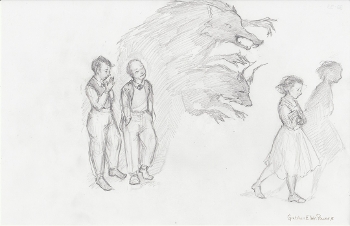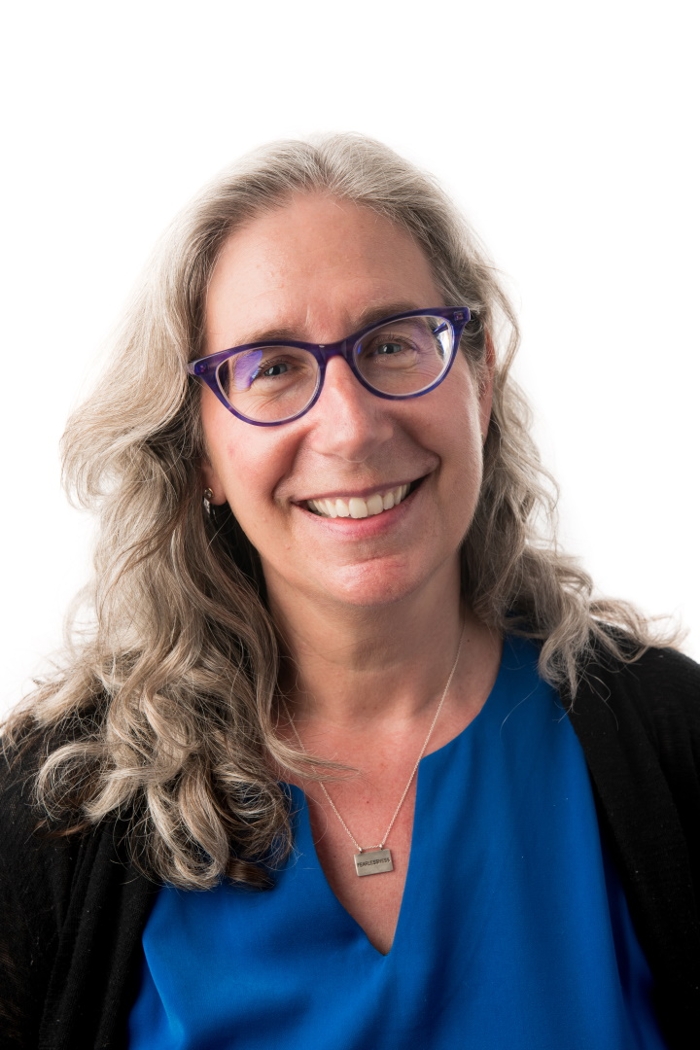The Writer's Page: The Lovely Dance: The Alone/Together Collaboration of Picture-Book Storytelling
A picture book is a dance that begins with a solitary dancer, whose success depends on sharing the stage with future partners. In truth, it is a company of dancers: author and illustrator, editor, designer, and art director. And only together will the dance flourish. But as Patrick Swayze famously said in Dirty Dancing, “This is my dance space. This is your dance space. I don’t go into yours; you don’t go into mine. You gotta hold the frame.”
A picture book is a dance that begins with a solitary dancer, whose success depends on sharing the stage with future partners. In truth, it is a company of dancers: author and illustrator, editor, designer, and art director. And only together will the dance flourish. But as Patrick Swayze famously said in Dirty Dancing, “This is my dance space. This is your dance space. I don’t go into yours; you don’t go into mine. You gotta hold the frame.”
When I teach picture-book writing, I can’t stress enough that crafting a compelling story means understanding that half of its whole won’t exist until the illustrator (chosen by the editor and art director) brings their vision to the story — which could be a year (or many) later. If this sounds like a difficult creative exercise, it is — but it’s the only way the singular magic of this genre happens. An author must leave space in their text for the illustrator to fully engage without any imposed constraint. When a writer succeeds at this, the artist knows it. Author-illustrator Liza Woodruff told me, “An illustrator can feel the space yielded by the writer and move freely into it without having to elbow their way onto the spread.”
My own understanding of picture-book writing continues evolving, in direct relationship to the partners with whom I’ve whirled and twirled across a multitude of double-spread stages. I hold this education dear, as my experience, which has included seven picture-book biographies, has allowed me many opportunities to continue doing my part to put remarkable women’s histories into the narrative for young readers. I have a “trickle-up” theory about this work — the more seeds we plant in the early years, the more these histories will feel familiar to readers, feeding curiosity and inspiring them to read further as they grow.
 |
| Christy Ottaviano and Tanya Lee Stone. Photo courtesy of Christy Ottaviano. |
When I entered into my first picture-book collaboration (Elizabeth Leads the Way: Elizabeth Cady Stanton and the Right to Vote) as a writer, I was coming from an editorial background in school and library market children’s nonfiction and didn’t realize how staggeringly different the publishing process would be. I naively assumed my input would be expected from start to finish. I quickly learned from my editor, Christy Ottaviano, to shift my thinking a bit. Working with her over the last fifteen years on six picture-book biographies, I have had the opportunity to witness the collaborative work that goes on among editor, designer, art director, and illustrator behind the scenes. In reflecting on this together years later, Christy said: “The nonfiction landscape was changing when we started working together. Your ability to bring more background to the research was welcomed to the process, even when the illustrator had nonfiction experience. Why wouldn’t I want to make full use of your skills?”
But as Swayze said, I can’t step into the illustrator’s dance space — I gotta hold the frame. I can’t only know what my place is; I also have to know what it isn’t. In nonfiction, if I see something that might compromise accuracy, it is my responsibility to speak up. But I’m only focusing on historical inaccuracies and/or moments that could compromise the non in nonfiction. It is not my place to presume to offer opinions on color palette, style, or any other artistic choice an illustrator makes.
My part in holding the frame includes providing additional research to supplement the illustrator’s. My process innately includes visual research, as it inspires and informs my text. Plus, I am acutely aware that the visual storytelling layer is imminent. I collect resources for rendering historically and/or scientifically accurate art; curate photographs, diagrams, or other visual evidence; and cite passages of text from research containing detailed descriptions of important story elements, supporting a foundation for visual interpretations. Christy: “Illustrators do their own visual research and often visit and photograph real places for reference; you help by providing backup on many of those historical details to ensure accuracy even before a fact checker is brought in for final confirmation.”
 Our newest book together (our first with illustrator Gretchen Ellen Powers) is Remembering Rosalind Franklin: Rosalind Franklin & the Discovery of the Double Helix Structure of DNA, and it’s my most recent effort in continuing to help set the record straight regarding groundbreaking women’s history. Of special interest to me lately are those women who have fallen under the negative spell of the Matilda Effect, which is when men take credit for women’s achievements. It’s named after Matilda Joslyn Gage, who first wrote about this sexist practice in the late 1800s.
Our newest book together (our first with illustrator Gretchen Ellen Powers) is Remembering Rosalind Franklin: Rosalind Franklin & the Discovery of the Double Helix Structure of DNA, and it’s my most recent effort in continuing to help set the record straight regarding groundbreaking women’s history. Of special interest to me lately are those women who have fallen under the negative spell of the Matilda Effect, which is when men take credit for women’s achievements. It’s named after Matilda Joslyn Gage, who first wrote about this sexist practice in the late 1800s.
What happened to Rosalind Franklin fits the bill. She was the scientist whose x-ray crystallography work made it fully possible for James Watson and Francis Crick to discover the double helix structure of DNA — and go on to win a Nobel Prize. This book is chock full of complicated science — and it was a complicated project.
I couldn’t begin to detail what actually goes on between Christy, an illustrator, and the rest of the design and production team, so I asked her to weigh in:
With Tanya’s books, the sheer amount of history and science can be challenging for an artist. And with Rosalind, the science is literally microscopic. I created a paginated dummy breakdown for Gretchen working with the rhythm and pacing of the text and page-turning flow. Gretchen and I then discussed the illustration focus (spreads versus individual pages and spots, and where she would display her beautiful borders) and the overall buildup to the climactic spreads and denouement. Another challenge for Gretchen was to age Rosalind from childhood through adulthood while simultaneously illustrating a story with a lot of different beats and scenes. Gretchen spent a great deal of time working on that age progression, showing the years unfolding in beautiful detail. As the sketches evolved, Tanya had to do additional work to streamline the text yet keep the science accessible, which she managed so effectively. We were tinkering right down to the end of the final layout pass to get the harmony right between text and art. My job as editor and publisher is to make sure all of the parts in this process are working together in perfect step.
For me, the most mysterious and thrilling part of the entire nonfiction picture book–making process is the first time you are privy to sketches. It’s difficult to describe the exhilaration of witnessing an idea that originated in you being transformed by your picture-book illustrator into something new. More practically, seeing pencil sketches affords the opportunity to check for any inaccuracies or misinterpretations that might crop up during this stage. Since picture-book texts must be spare, requiring interpretation by the artist, this is almost anticipated as part of the initial phase in a nonfiction project.
One of the most provocative moments I’ve ever experienced happened when I saw Gretchen’s incredible pencil sketches for Rosalind. In one particular scene, she had visually interpreted the behaviors of Watson and Crick in a way that made me gasp. It was hugely satisfying. I knew we wouldn’t be able to keep the interpolation, yet her imaginative version of the men turning into wolves captured how I truly felt about their actions. This sparked an insightful discussion with Christy about the nuances of what is and is not possible within the nonfiction genre, and she incorporated my thoughts with hers to share with Gretchen. When I asked Gretchen about it, she said,
I could feel the injustice through the powerful words and imagery that you were painting of what happened to Rosalind, and through that first sketch I wanted to convey how I felt they preyed on her in a monstrous way! I knew at the time it might be a bit too much of a Grimms’ fairy-tale approach. In the end I still tried to express the darkness, but also their shadows are bouncing off of the light that is surrounding Rosalind as she walks off the page. I wanted to show a feeling of hope for anyone who has ever been treated unfairly or without kindness. Marching forward, so to speak, and shaking their dust off of her.


A sketch (left) and final art (right) for Remembering Rosalind Franklin.
Sketch courtesy of Gretchen Ellen Powers; Remembering Rosalind Franklin. Illustration (c) 2024 by Gretchen Ellen Powers.
Indeed, I can still feel that raw wolf energy in Gretchen’s finished painting of the men, and love the before and after so much!
What I will forever cherish about this lovely dance is this: we create it together, learning when to let the other lead, making space for each other, pulling back, gliding forward, swirling around that beautiful stage that is a single page, a double spread, a picture book. It takes two to tango. Well, maybe five, or more!
From the May/June 2024 special issue of The Horn Book Magazine: Our Centennial.
 Single copies of this special issue are available for $15.00 including postage and may be ordered from:
Single copies of this special issue are available for $15.00 including postage and may be ordered from:
Horn Book Magazine Customer Service
magazinesupport@mediasourceinc.com
Full subscription information is here.

RELATED
ALREADY A SUBSCRIBER? LOG IN
We are currently offering this content for free. Sign up now to activate your personal profile, where you can save articles for future viewing.







Add Comment :-
Be the first reader to comment.
Comment Policy:
Comment should not be empty !!!